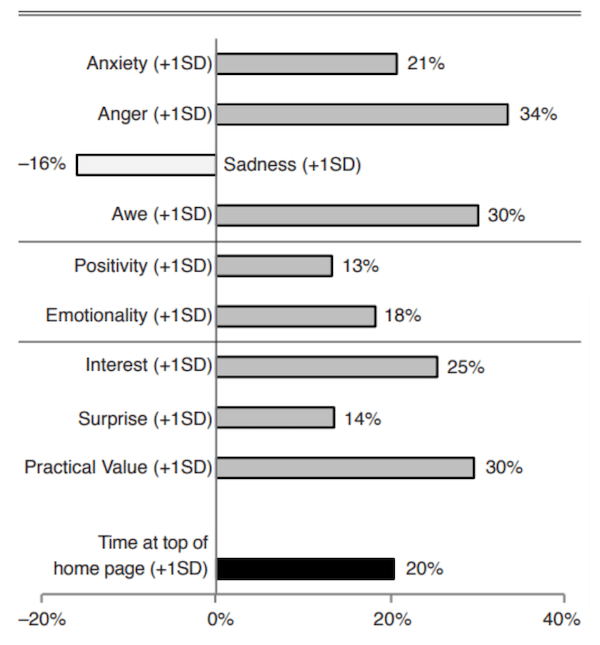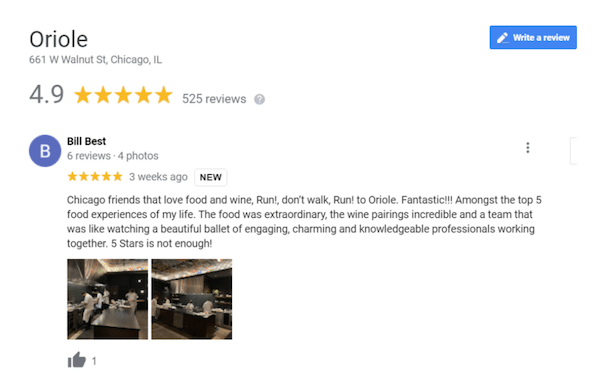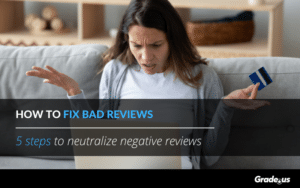It’s the neglected part of review management.
Sharing online reviews on social media is something that’s not as common as it should be. When asked, many marketers cite a few common reasons which, on the surface, sound like legitimate complaints.
These complaints are harmful.
They’re harmful because they ignore the not-so-obvious purpose of your online reviews.
Great reviews are objection defusers
When it comes to online reviews, customers are active participants. Customers search for reviews in a variety of places. If we look at the data, we see that this is confirmed in several ways.
- 97 percent of consumers use online media to research products and services
- 90 percent use search engines
- 95 percent of consumers read online reviews before making a purchase
- 82 percent of consumers specifically seek out negative reviews
- Four out of five consumers have changed their minds after reading negative reviews
- 3.3 is the minimum star business rating consumers would engage with
Initially, customers are focused on the aggregate star ratings.
Ken Bowen, in his post at Marketing Experiments, writes:
"When processing review data, users are looking to gather as much information as they can in the shortest amount of time possible. Users don't want to search for or through reviews; they want quick visual summaries of the sentiments of other customers. Customers pay more attention to star ratings or aggregate review data than they do to the actual written review content on the page. Aggregated scores, whether they be an average star rating used by sites like Amazon or a weighted score similar to those seen on sites like Rotten Tomatoes and MetaCritic, are assigned more weight by customers than an assortment of long, informative review essays."
Does this mean customers aren’t reading reviews?
Of course not!
Looking at data from BrightLocal’s 2020 Review Survey, we find that the opposite is true!
“When looking at consumers that read online reviews for local businesses, 96% also read businesses’ responses to their reviews – with 40% saying they ‘always’ read the responses.”
They can’t both be true, can they?
They are.
When customers make an initial look at a company’s review portfolio, they’re focused on the aggregate star ratings; it’s a quick and easy way to determine if the company they’re evaluating is worth their time. As they move closer towards their purchase decision, they spend more time assessing reviews, verifying that customer reviews validate their decision for or against.
The data shows this.
But we can also see that this is taking place on a variety of platforms. Some review platforms allow responses to individual reviews. Many sites also allow readers to flag reviews as helpful, funny, etc.
Why reviews on Social Media are so important
Social media is all about virality.
Researchers searched for an answer to the question “What Makes Content Go Viral?” They wanted to understand the underlying components of the content that’s shared again and again; they also wanted to identify the defining characteristics of viral content.
You can probably guess.
Content that elicits an emotional reaction tends to be more widely shared (no surprise).

Here are some direct quotes from the study.
- Stories stimulating positive emotions are more widely shared than those eliciting negative feelings
- Content that produces greater emotional arousal (making your heart race) is more likely to go viral
- Content that makes readers or viewers feel a positive emotion like awe or wonder is more likely to take off online than content that makes people feel sad or angry
- Causing some feeling is far better than inspiring none at all
- Anger-inducing content is more likely to be shared than sadness-inducing content because it produces greater emotional arousal or activation
Is this accurate?
Let’s take a look at a few reviews to see for ourselves.
1. Never, Ever Give Up. Arthur's Inspirational Transformation
Diamond Dallas Page, or DDP, is a fitness instructor. His client, Arthur Boorman, was a disabled veteran of the Gulf War for 15 years and was told by his doctors that he would never be able to walk on his own, ever again.
DDP shared his story on YouTube.
Someone’s peeling a lot of onions.
Arthur’s story was shared in 2012, and it’s still being shared around the world, nine years later.
Wait a minute.
There are no stars, no aggregate rating. You can’t share online reviews on social media if you don’t have stars! You absolutely can. More on this later.
2. Zappos sends you flowers
Zappos is known for its legendary customer service. Their customers frequently rave about the insane lengths they’ll go to to take care of their customers.
Here’s an example written up by Consumerist.
"Zaz Lamarr meant to return some shoes to Zappos, but her mom passed away and, naturally, she just didn't have time. Zappos arranged to have UPS come pick up the shoes—and then sent her flowers: When I came home this last time, I had an email from Zappos asking about the shoes, since they hadn't received them. I was just back and not ready to deal with that, so I replied that my mom had died but that I'd send the shoes as soon as I could. They emailed back that they had arranged with UPS to pick up the shoes, so I wouldn't have to take the time to do it myself. I was so touched. That's going against corporate policy. Yesterday, when I came home from town, a florist delivery man was just leaving. It was a beautiful arrangement in a basket with white lilies and roses and carnations. Big and lush and fragrant. I opened the card, and it was from Zappos. I burst into tears. I'm a sucker for kindness, and if that isn't one of the nicest things I've ever had happen to me, I don't know what is."
Awe-inspiring, isn’t it?
This kind of legendary service is significant because Zappos went above and beyond. Forget about big corporations; it isn’t something that average people do.
3. Oriole Restaurant: Top 5 Food Experience of my Life
Oriole is a well-known fine dining restaurant in Chicago. Their menu is exceptional, and their food is outstanding. This customer left a review about their experience.

That’s high praise.
“The top 5 food experiences of my life” and “5 stars is not enough!”
Can you see what’s happening?
These are just three examples of exceptional reviews, but all of them trigger an emotion that’s empirically verified to produce virality. Did you catch the emotion in each of these?
It’s awe.
The service and the results achieved were awe-inspiring.
How to post great reviews on social media
You’ll need to receive great reviews from customers before you’re able to share them. Here’s a proven methodology you can use to create reviews with stars and produce testimonials that produce amazing results via social media.
- Create or claim your review profiles on mainstream, niche, and industry-specific review sites. Make sure you’ve taken the time to optimize your profile, write a description, add images, tags, keywords, etc. Use our review management checklist to guide your team through the process.
- Make a list of your total reviews across all review sites, positive and negative.
- Add your positive four and five-star reviews to your social media profiles and schedule recurring posts that frequently appear at set intervals. Create a list of your best five-star reviews and set them aside for later.
- Create a “win-back” campaign to reach out to specific customers who wrote a negative review about your business, product, or service in the past. These should be unhappy or dissatisfied customers, not trolls, ragers, or abusive customers.
- Create a review funnel via software like Grade.us, Gather Up, Podium, etc., that sends out automatic review requests via email and text.
- When you receive reviews, sort customers according to steps three and four above. Then follow the steps below.
Okay, we’re ready for the next steps.
For positive reviews, you’ll want to load them into your social media management tool of choice.
Here’s a quick video showing you how to set up scheduled posts.
You can copy and paste content from the review along with a link to the specific review or the review site at the end of your post.
What about negative reviews?
Here’s a five-step process you can use to win back customers who previously wrote a negative review on your profile.
- Sort your list of negative reviews. You’re looking for any customers who had a legitimate problem or concern and left a negative review. Serious or previously engaged customers are ideal.
- Segment your list. Go through each review, eliminating trolls, ragers, sadists, and abusive customers. Avoid these customers and focus on those with legitimate complaints about your business.
- Create an irresistible offer to entice customers. For example, if you’re running a ski resort, you could reach out to unhappy customers with free 5 day vouchers good for 10 people total. Give them plenty of time to use the offer.
- Pitch unhappy customers. Respond to these negative reviews directly; ask them to get in touch, let them know that you’d like to make things right. Leave your email address or contact info. Only approach customers who meet your criteria.
- Make the customer experience memorable. Do whatever it takes to fix the problems they mentioned in their review. Roll out the red carpet, ensure your staff is on their best behavior. Do what you can to restore the relationship.
- Ask them to share their unbiased feedback, positive or negative. In your response, thank them for the opportunity to make things right. If they decide to behave inappropriately, this will be evident in their review. Continue being excellent to your customers.
If you receive positive reviews, add those to the list and schedule those in your social media management tool of choice. Use tools like Grade.us to embed these reviews on your website and around the web. Share your reviews thoughtfully; the emphasis should be on relevance.
When do you have the opportunity to share?
You can:
- Share customer reviews on social media
- Brag about your customer’s goals and accomplishments by sharing their review
- Use customer reviews to defuse an objection (i.e., I was always afraid of going to the dentist, but I found that…)
- Counteract negative reviews and review bombing with social media reviews
- Use customer reviews to respond to requests for recommendations (i.e., anyone know a good plumber in…?)
There are so many opportunities to share.
Isn't it self-serving to share reviews about your business?
It sure seems that way.
It would be if you made the review all about you. As a general rule, it’s best to focus on your customers. Focus on the fact that you were able to serve them, that you helped them achieve the impossible, or that you went above and beyond.
Make it all about them.
Here’s the secret if you’re unsure. It’s all about honor; if you’re looking for ways to genuinely honor your customers and express gratitude for them, your actions will resonate with customers. Make your communication about them, and customers will, in turn, focus on you and the value you provide.
Great reviews make social media management easy.
Great reviews are the best salespeople
They provide customers with the credible, trustworthy details they need to support your business. Sharing online reviews on social media is something that’s not as common as it should be. When asked, many say it feels selfish or self-serving, that it’s difficult or unclear.
It doesn’t have to be.
Just focus on your customers. Make them the emphasis, and you’ll find your customers are eager and willing to share your online reviews on social media.










